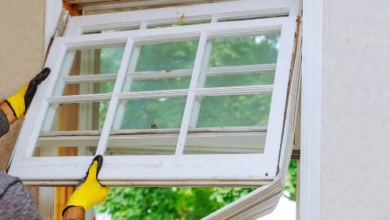Top 5 Strategies for a Cooler, More Energy-Efficient Home this Summer

Summer’s arrival brings sunshine and warmth, but it can also lead to soaring energy bills as your HVAC system struggles to keep your home cool. Fortunately, there are several strategies you can implement to create a more comfortable and energy-efficient living environment during the hot summer months.
Let’s get started!
Top 5 Strategies for a Cooler, More Energy-Efficient Home this Summer
These improvements not only benefit your wallet but also contribute to a more sustainable lifestyle.
1. Invest in Energy-Efficient Home Window Replacement:
Windows play a crucial role in your home’s energy efficiency. Older, single-pane windows allow significant heat gain in the summer, forcing your air conditioning system to work overtime. Upgrading to energy efficient home window replacement can significantly reduce your cooling costs.
Look for windows with double or triple panes, as these provide superior insulation. Low-emissivity (Low-E) coatings on the glass reflect solar heat away from your home, further minimizing heat gain. Energy-efficient windows not only keep your home cooler in the summer but also warmer in the winter, contributing year-round energy savings.
2. Utilize Light-Filtering Window Treatments:
While windows allow natural light, they can also act as heat sources during the summer. Strategic use of window treatments can help mitigate heat gain and create a more comfortable indoor environment. Consider installing light-filtering window treatments like shades or blinds.
Hunter Douglas Luminettes are a versatile option, offering light control and privacy while maintaining a view. These fabric vanes can be tilted to diffuse sunlight and reduce heat gain without completely blocking the view outside. Look for window treatments with light-colored fabrics, as they reflect heat better than darker colors.
3. Maximize Natural Ventilation:
Taking advantage of natural ventilation whenever possible can significantly reduce your reliance on air conditioning. Open windows and doors in the evenings and early mornings when the outside air is cooler.
Ceiling fans can further enhance air circulation and create a windchill effect, making you feel cooler without lowering the thermostat. However, remember to close windows and doors during the hottest part of the day to prevent hot outside air from entering your home.
4. Seal Air Leaks and Drafts:
Even the most energy-efficient windows and doors won’t perform optimally if there are air leaks around them or in other areas of your home. Air leaks allow hot outside air to seep in, increasing your cooling needs. Taking the time to seal air leaks can significantly improve your home’s energy efficiency.
Common areas for air leaks include around windows and doors, electrical outlets, plumbing penetrations, and attic access points. Caulking or weatherstripping can effectively seal these leaks, preventing heat gain and improving your home’s overall comfort.
5. Smart Thermostat Programming:
A programmable thermostat can be a valuable tool in managing your home’s energy consumption. By programming your thermostat to adjust the temperature automatically when you’re away or sleeping, you can significantly reduce cooling costs without sacrificing comfort.
Smart thermostats can also learn your habits and preferences over time, creating an energy-efficient schedule customized for your lifestyle.





